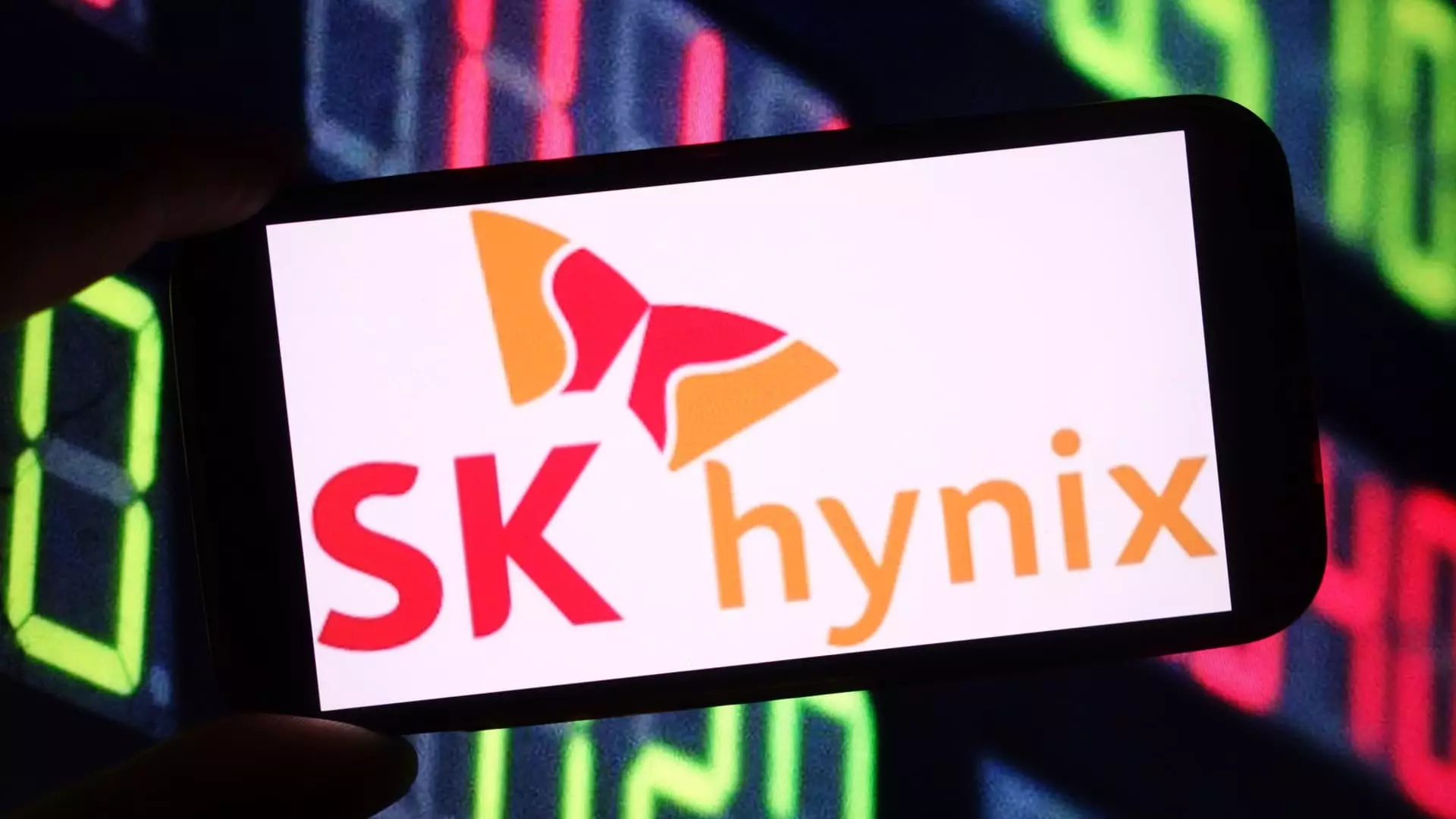SK Hynix has once again made waves in the semiconductor industry, unveiling impressive financial results that surpassed expectations. In the first quarter, the South Korean giant reported a staggering revenue of 17.64 trillion won (approximately $12.36 billion), exceeding the anticipations of financial analysts who estimated a revenue of only 17.26 trillion won. Operating profits also hit an extraordinary 7.44 trillion won – well above the projected 6.62 trillion won. These figures represent a breathtaking year-on-year increase of 42% in revenue and an astonishing 158% boost in operating profit. Such numbers speak volumes about not just the company’s operational excellence but also its significant leverage in an increasingly AI-driven market.
However, amidst this financial jubilation, a quarter-on-quarter analysis reveals a slight contraction. Revenue fell by 11% and operating profit decreased by 8% compared to the record highs of the previous quarter. This decline, while worrying, may not paint the full picture of SK Hynix’s robust market position, particularly as macroeconomic factors loom large on the horizon.
High Bandwidth Memory: The Engine of Growth
At the heart of SK Hynix’s remarkable financial performance is its high bandwidth memory (HBM) offerings, which play a crucial role in powering artificial intelligence chipsets. As companies increasingly rely on AI technologies, the demand for dynamic random access memory (DRAM) has surged. This type of memory is indispensable for handling high-speed data processing, making it foundational to AI applications across various sectors. With SK Hynix capturing an extraordinary 70% share of the HBM market by revenue, their strategic positioning as a primary supplier cannot be overstated.
The company’s confidence in the future remains unshaken, despite calls for caution due to global economic uncertainties. An executive noted potential volatility in demand linked to shifting U.S. tariff policies, but also expressed optimism regarding limited impacts on its artificial intelligence server market. This nuanced understanding of the market landscape demonstrates SK Hynix’s agility and foresight, critical traits that ensure it not only survives but thrives.
AI as a Growth Catalyst: An Upsurge in Demand
The ongoing revolution in artificial intelligence is undoubtedly the axis around which SK Hynix’s recent success rotates. With the expansion of AI technologies, the company forecasts sustained tech spending on AI platforms, further buoyed by the proliferation of open-source AI projects. The mention of “sovereign AI projects” illustrates a more significant trend in nationalistic approaches to technology—countries investing in homegrown AI solutions could lead to increased demand for memory chips.
As cited by a company executive, the decline in development costs has catalyzed flourishing initiatives for AI-related projects, dramatically increasing demand for memory solutions. The introduction of models like DeepSeek’s open-source R1 reasoning further exemplifies how innovative breakthroughs are pushing the boundaries of AI, creating additional opportunities for memory suppliers such as SK Hynix.
Competitive Landscape: Challenges and Opportunities
While SK Hynix undeniably leads the HBM market, it does not operate in a vacuum. Competitors like Micron Technology and Samsung Electronics are formidable challengers, equally eager to capture a share of this lucrative sector. The landscape is rapidly evolving, and all players are vying not just to meet current demand but also to anticipate future needs within the ever-changing tech ecosystem.
Despite a slight dip in share prices amidst this competitive climate, the overall prospects for SK Hynix remain bright. With an increasing tendency towards integrating AI functionalities into consumer electronics, there lies a dual opportunity: sustaining growth through enterprise demands while simultaneously capitalizing on the burgeoning consumer market. As products featuring AI-related capabilities emerge, SK Hynix is poised to benefit from the amplified memory needs of these innovative technologies.
As we move forward, the semiconductor giant’s strategic investments in research and development as well as its adaptive approach to market challenges will likely define its trajectory. The intersection of AI technology and memory solutions is not simply an industry trend—it’s transforming SK Hynix into a linchpin in an electrifying transformation of global technology. The ripple effects of these developments will undoubtedly resonate through various sectors, underscoring the company’s preeminence in a rapidly digitizing world.


Leave a Reply